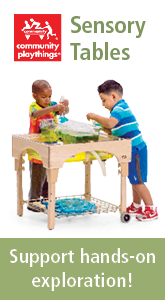January 16, 2025
Handwriting is a Whole Body Thing
She may have looked normal on the outside, but once you’d seen her handwriting you knew she was deliciously complicated inside.
– Jeffrey Eugenides, author
During Episode 342 of That Early Childhood Nerd, host Heather Bernt-Santy and guest Mike Huber explore the whole body experiences that must be in place so that children can learn to write when they are developmentally ready. Huber argues that passing up these whole body experiences comes at a cost:
“We spend a lot of time and a lot of frustration trying to get kids to be 8 year olds rather than letting them be the two year old they are or the three-year old they are or the four year old they are…And if you skip building the foundation, that’s when you can talk with occupational therapists about the kids who didn’t do enough tummy time, who didn’t learn to use their hands in many ways, but went right to being told how to handwrite, and now they don’t have the motor control they need….When you start having children sitting in chairs at three and four, they’re not getting the full range of motion in their arms.”
In her book, The Whole Child Alphabet, Stacy Benge affirms Huber’s views:
“Handwriting is a complex skill that requires more than placing a pencil in a child’s hand and ‘teaching’ them how to form the letters. Writing requires the entire body. Yes, the fine motor skills are important, but the performance of the small muscle movements rely heavily on the gross motor muscles being developed and stabilized. It is critical to respect the continuum of physical development and not skip steps. This is why I say, handwriting begins on the playground! So, instead of using curriculums that ‘teach’ handwriting, take children outside and let them run around, climb, and play as much as possible.”
Share with the hashtag #ExchangeEveryDay
Print Friendly
Related
By Mari Riojas-Cortez and Aura Pérez-González
By Lonnie Hendrickson












